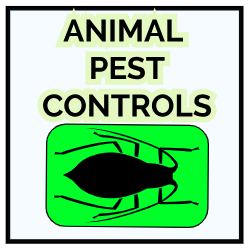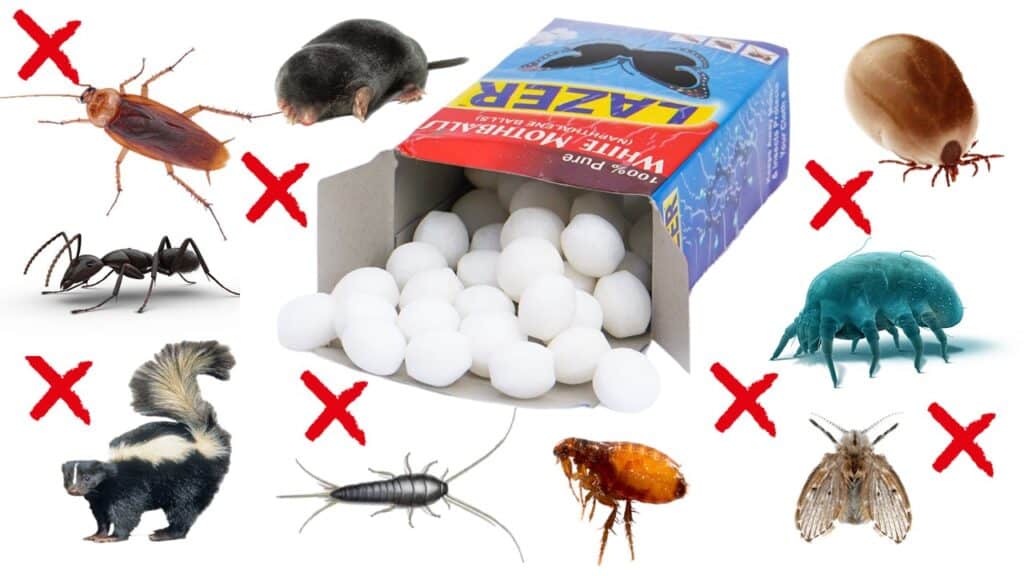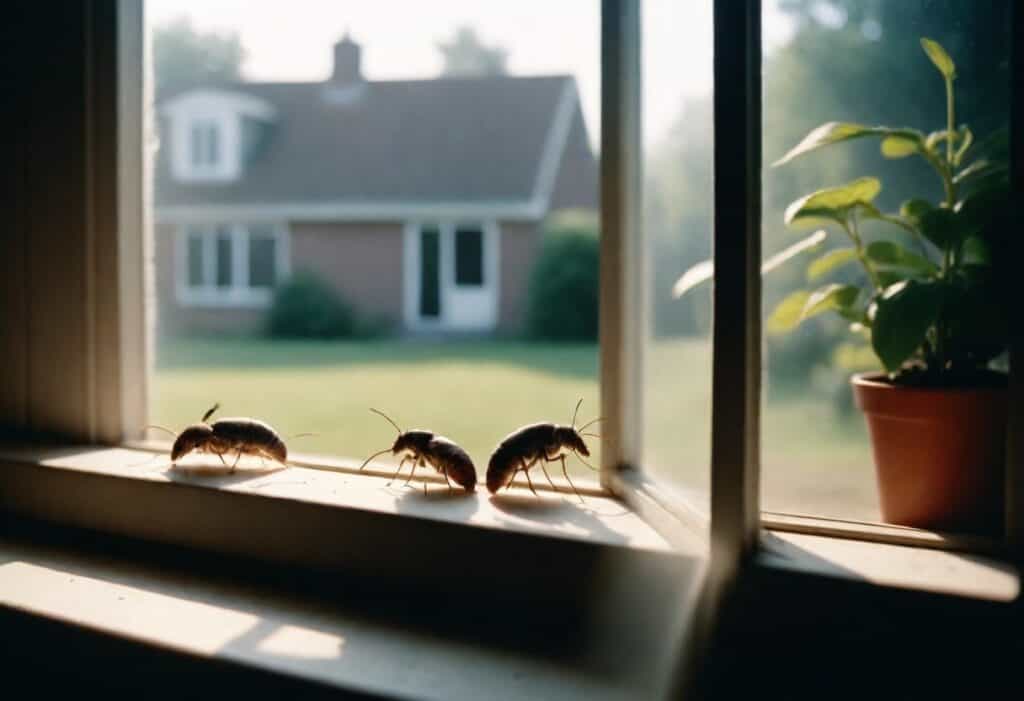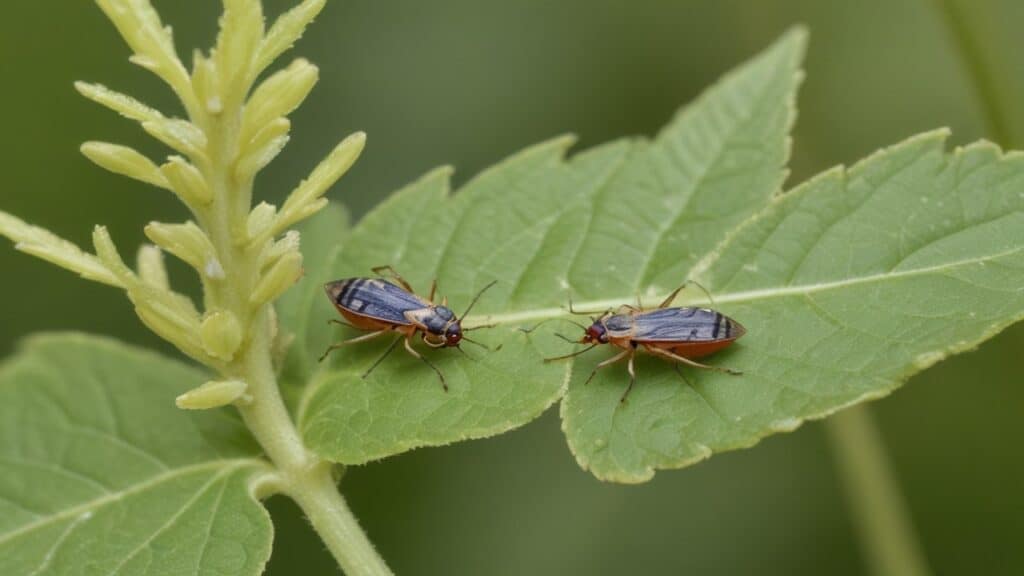Are pests making themselves too comfortable in your humble abode?
Are you tired of these critters invading your personal space?
It’s time for some mothball warfare!
This epic video will guide you through the art of pest elimination using these miniature heroes.
We’ll teach you sneaky tricks and clever hacks to make those critters flee faster than Usain Bolt in a race! From ants to moths, no pest stands a chance against the almighty mothball.
Never settle for sharing your space or allowing them to ruin your day.
Conquer those unwanted guests by watching this incredible video right away! Watch now and reclaim your home!
Table of Contents
What are Mothballs?
Mothballs are small, round balls with white color and have a distinctive pungent odor. These balls consist of naphthalene or paradichlorobenzene, which are solid aromatic hydrocarbons.
Naphthalene mothballs have a more recognizable smell, which you can identify by their pungent, sometimes overpowering scent.
Chemically, mothballs undergo sublimation, meaning they transition directly from solid to gas without becoming liquid. This process releases the vapor into the air, creating an environment that repels pests such as moths, silverfish, and cockroaches.
The high volatility of mothballs allows them to release toxic fumes over an extended period.
The main constituent of naphthalene-based mothballs is naphthalene itself. It consists of two fused benzene rings and has a molecular formula of C10H8.
On the other hand, paradichlorobenzene-based mothballs primarily consist of paradichlorobenzene (C6H4Cl2), which is a chlorine derivative of benzene. These chemicals interfere with the insects’ nervous system when inhaled.
What are the Ways to Eliminate Pests with Mothballs?
1. Moths
Moths are a common household pest that can damage clothing, carpets, and other fabrics.
One way to get rid of moths is by using mothballs. Mothballs can eliminate moths due to chemicals like naphthalene or paradichlorobenzene.
These compounds vaporize slowly, releasing a toxic gas that repels and kills moths. When you place mothballs in enclosed spaces such as closets or storage boxes, the gas from these balls saturates the air, suffocating and poisoning any moths present.
The chemicals in mothballs disrupt the nervous system of moths. Once inhaled or ingested, these toxic substances interfere with the insect’s ability to function, ultimately leading to its demise.
Mothballs are also a deterrent for future infestations because moths find their odor extremely unpleasant and tend to avoid areas where they are present.
Place the balls in the areas where moths are present for maximum effect. These areas include closets, drawers, and storage boxes, where you keep clothing or other fabric items.
You can also place a few mothballs inside vacuum cleaner bags to kill any eggs or larvae picked up during cleaning. However, ensure you handle mothballs cautiously, as they can harm humans and pets if ingested or inhaled excessively.
2. Bed bugs
Mothballs are famous for repelling and killing various pests, including bed bugs. The active ingredients in mothballs have strong fumigant properties.
When exposed to air, these chemicals release a toxic gas that acts as a powerful insecticide. Bed bugs are susceptible to the toxic effects of mothballs for several reasons.
First, the gas released by mothballs can penetrate deep into cracks and crevices where bed bugs hide, reaching and killing them.
In addition, bed bugs have a highly-sensitive respiratory system that makes them more vulnerable to the chemical compounds in mothball vapors.
To kill and repel bed bugs with mothballs – identify the areas infested with these pests. Sprinkle mothballs in and around these areas, such as under your mattress or in cracks and crevices where bed bugs may be hiding.
The odor of mothballs is a deterrent for bed bugs, killing and causing them to avoid these areas.
3. Cockroaches
Cockroaches are infamous household pests that can cause distress and frustration.
These resilient insects can survive in harsh conditions and reproduce rapidly, making them difficult to control. However, using mothballs is an effective way to eliminate cockroaches.
Mothballs contain chemicals such as naphthalene or paradichlorobenzene, which have strong odors that repel cockroaches.
Placing mothballs in areas like kitchen cabinets or dark corners can deter these pests from entering your home. However, don’t use mothballs in areas where you prepare or store food, as they release toxic fumes.
To use mothballs against cockroaches – crush them into a powder. You can do this by placing a few mothballs inside a plastic bag and using a rolling pin or hammer to crush them.
Sprinkle it in areas where cockroaches are present, such as cracks and crevices, underneath sinks, or behind appliances. Alternatively, another effective way to use mothballs is to place them inside breathable containers like mesh bags or cheesecloth sachets.
These containers allow the odor from the mothballs to permeate while containing them and preventing direct contact with surfaces or food items.
You can place these sachets in areas prone to infestation, such as kitchen cabinets, pantry shelves, or bathroom corners.
4. Ants
Ants are often a common nuisance that homeowners have to face. These tiny insects can invade your home, contaminate food, and cause structural damage if left unchecked.
However, you can eliminate them with various methods, and one such method is using mothballs. Mothballs contain a strong odor that repels ants and other insects due to chemicals such as naphthalene or paradichlorobenzene.
When exposed to naphthalene, ants experience respiratory distress and suffocate due to the fumes from the mothballs. This chemical disrupts the ant’s ability to take in oxygen and eventually leads to its death.
The toxic properties of mothballs make them excellent for eliminating ant infestations. Ants hate the odor of mothballs and will avoid areas where they are present.
To utilize mothballs for ant control – place them in areas where ants enter your home or nest. These areas could be near window sills, doors, cracks in walls or floors, or any other entry points you have identified.
You can also scatter mothballs around your garden or yard to prevent ants from invading these spaces.
5. Silverfishes
Silverfishes are small, wingless insects found in homes and other structures. They have distinct silver-colored scales and wriggling movements, which resemble the movement of a fish.
These pests thrive in dark, damp environments such as basements, bathrooms, and attics where they can find moisture and food sources.
While silverfish do not harm humans or pets, they can cause significant damage to belongings such as books, clothing, paper goods, and even wallpaper. Mothballs contain chemicals such as naphthalene or paradichlorobenzene, which are highly toxic to silverfish.
After releasing these chemicals into the air, they make a strong odor that repels and kills silverfish. The pungent smell is unbearable for silverfishes, disrupting their ability to locate food sources and navigate the environment. These chemicals interfere with the silverfish’s biological processes and eventually lead to their death.
To use mothballs against these pesky insects – place them in areas where you have spotted silverfish activity. Make sure to put the mothballs in closed containers or pouches to prevent direct contact with your belongings because they may leave behind an unpleasant odor.
Proper ventilation is vital to minimize the risk of inhaling the fumes from mothballs.
6. Fleas
Fleas are tiny, wingless insects that can cause a significant nuisance in homes and pets.
These blood-sucking pests can quickly infest an entire house if left untreated, making it crucial to eliminate them.
One popular approach is the use of mothballs, which are famous for repelling moths and other insects. Mothballs contain toxic chemicals, releasing a strong odor that deters insects.
When used correctly, these compounds can create an inhospitable environment for fleas and encourage them to leave the area.
Place the balls in areas where fleas are likely to hide or breed, such as pet bedding or dark corners of the house. Always follow safety instructions when handling mothballs and keep them away from children and pets, as they can be toxic if ingested.
7. Dust mites
Dust mites are microscopic insects that live in our homes, particularly in areas where dust tends to accumulate. They thrive in warm and humid environments, such as bedding, carpets, and upholstered furniture.
While not visible to the naked eye, dust mites can cause various allergic reactions and respiratory issues. Mothballs can kill and repel these mites because they feature toxic compounds.
These compounds release a pungent odor to repel these pests. The chemicals sublimate into toxic gas to insects but are not harmful to humans when you use them appropriately.
Always follow safety guidelines when using mothballs for pest control. Place the mothballs in areas where you suspect dust mite infestation or their preferred habitats, such as pieces of furniture and closets with stored clothing or bedding.
Keep them away from children and pets, as they can be poisonous if ingested or inhaled excessively.
Conclusion
Mothballs can be a handy tool in your battle against pests.
Whether you’re dealing with pesky moths or other unwanted critters, these little balls of goodness can help keep them at bay. Handle them cautiously, as they can be toxic to humans and pets.
Always read the labels and follow the instructions to ensure safety for yourself, your family, and your pets. So go ahead! Grab those mothballs and say goodbye to those unwanted visitors in your home!



